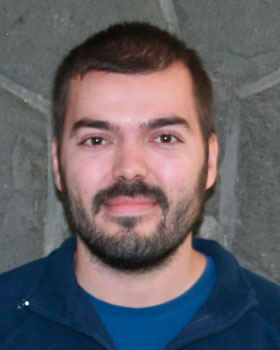
Institution: Pontificia Universidad Católica de Chile
Research Areas:
- The Milky Way
- Local Group
- Globular Clusters
- Email: jcarball@das.uchile.cl
Julio Carballo
The most widely accepted cosmological scenario nowadays, the so-called Cold Dark Matter scenario, suggests that complex galaxies were formed through the continuous accretion or assimilation of smaller systems similar to dwarf galaxies found around our Galaxy. In the case of the Milky Way, in the last two decades it has been detected the presence of substructures in its outer regions, possibly associated with the debris generated by this process of galactic cannibalism.
In recent years I have investigated whether some of the clusters of the Milky Way were formed in these systems and were subsequently accreted lower, as shown in some of the global properties of the Galactic globular cluster system. With wide-field photometry, I detected the presence of traces of the tidal processes that destroyed their progenitor galaxies, allowing an estimate of the fraction of Galactic globular clusters with external origin and also obtaining important data on the position of some of the best-known tidal streams in the halo of the Milky Way. Currently, I focus in nearby dwarf galaxies looking for information on the process that led to the Milky Way as we know it today.
Studies
- Licenciado en Física – Especialidad Astrofísica por la Universidad de La Laguna (Canarias, España) 2001-2006 (incluyendo un año como estudiante Erasmus en la Universidad George-August-Universität de Göttingen , Alemania).
- Máster en Astrofísica – Orientación Teoría y Computación por la Universidad de La Laguna (Canarias, España) 2006-2007
- Doctorado en Astrofísica por la Universidad de La Laguna y el Instituto de Astrofísica de Canarias (Canarias, España) 2007-2012
- Publications
- Membership



